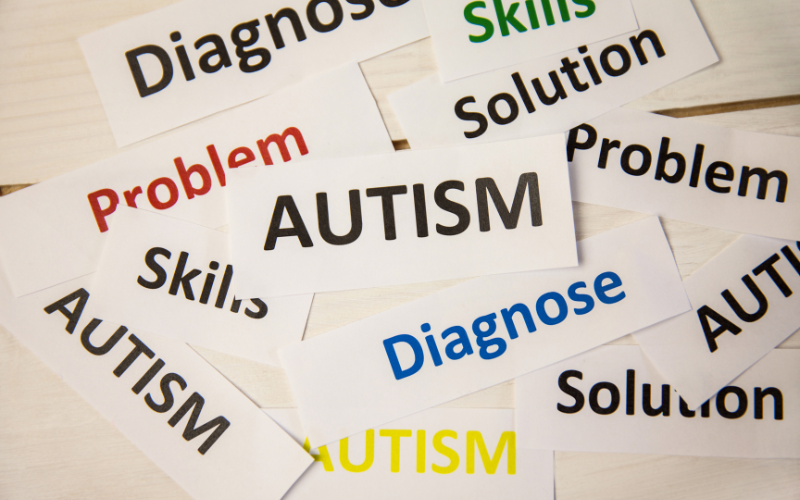How to recognize the female autism phenotype

According to the Centers for Disease Control, 1 in 44 children has Autism Spectrum Disorder (ASD), which has historically been viewed as a male disorder (Tomlinson et al., 2020). There are misunderstandings affecting the identification and understanding of females with autism that often result in females being overlooked or diagnosed far later, especially females with less complex needs. In the school setting, the discrepancy between male children clinically diagnosed and not identified using the educational diagnostic is 42%. However, the difference in female children with autism is 88%, leaving many more female students unidentified and unsupported in schools (Barnard-Brak, 2019).
With the limited understanding and research on the female presentation of ASD, female children need to demonstrate heightened severity or occurrence of problem behaviors to be identified compared to male children (Lockwood et al., 2021). Perceptions are often based on research dominated by a male sample. In a review of 382 articles regarding ASD, 80% of the population samples were male, permeating our understanding of ASD through a male-oriented lens (Young et al., 2018).
What does this look like in the classroom? The male and female autism phenotypes differ in four areas: females have higher social motivation, tend to mask or camouflage typical autism traits, exhibit more internalized difficulties such as anxiety or eating disorders, and restrictive and repetitive behaviors and interests are more often socially based. Female children with autism have a greater tendency to camouflage symptoms. Examples include practicing gestures and facial expressions, forcing oneself to make eye contact, hiding unpopular or immature interests, or nodding and smiling in agreement without understanding the social interaction. This coping strategy is a mental strain linked to anxiety, depression, and exhaustion and leads to missed opportunities for diagnosis and support (Whitlock et al., 2020). Intense interests are often social-oriented, which further deflects identification, and include novels, friends, animals, and pop stars. Whitlock et al. (2020) and Young et al. (2018) share symptoms more prevalent in female children with ASD than in male children with ASD:
- better nonverbal and facial communication skills
- exhibit repetitive behaviors/interests/activities toward people rather than objects
- interest and tendencies to interact with others
- passivity, commonly perceived as shyness
- increased likelihood of mimicking others
- increased likelihood of camouflaging challenges and developing coping strategies
- ability to maintain one or two friends
- demonstrate directive-type play with friends
- often included and cared for by peer groups at the elementary school level
- demonstrate more imaginative play
Further complicating proper identification is that generalized adult expectations vary based on gender. In the classroom setting, teachers show a greater tolerance for differing behaviors based on gender. Young et al. (2018) note that while observing students during recess, teachers showed more concern for behaviors typical of male students with ASD, social isolation, and hostility. Female students are often overlooked and labeled shy rather than socially isolated. Female students are often observed in peer groups and therefore overlooked; however, the relationship is superficial. In the home and schools, adults speak to female and male children differently, expecting more social behaviors and using more social and emotional vocabulary with females. Considering ASD has a substantial social and communication component in its identification, these differences can influence the child’s behaviors and skills (Young et al., 2018). Understanding the differences in male and female autism phenotypes will help the students who are often overlooked and unsupported.
Please visit T/TAC at VCU, Autistic Girls Network or the T/TAC at VCU Library for titles such as Aspergirls, Safeguarding Autistic Girls, or Unmasking Autism: Discovering the New Faces of Neurodiversity.
References
Barnard-Brak, L. (2019). Educational versus clinical diagnoses of autism spectrum disorder: Updated and expanded findings. School Psychology Review, 48(2), 185–189. https://doi.org/10.17105/SPR-2018-0009.V48-2
Lockwood Estrin, G., Milner, V., Spain, D. et al. (2021). Barriers to autism spectrum disorder diagnosis for young women and girls: A systematic review. Review Journal of Autism Developmental Disorders, 8, 454–470 . https://doi.org/10.1007/s40489-020-00225-8
Tomlinson, C., Bond, C., & Hebron, J. (2020). The school experiences of autistic girls and adolescents: A systematic review. European Journal of Special Needs Education, 35(2), 203–219. https://doi.org/10.1080/08856257.2019.1643154
Whitlock, A., Fulton, K., Lai, M. C., Pellicano, E., & Mandy, W. (2020). Recognition of girls on the autism spectrum by Primary School Educators: An experimental study. Autism Research, 13(8), 1358–1372. https://doi.org/10.1002/aur.2316
Young, H., Oreve, M. J., & Speranza, M. (2018). Clinical characteristics and problems diagnosing autism spectrum disorder in girls. Archives de Pédiatrie, 25(6), 399-403,
For questions or more information, please contact Kristen O’Sullivan, (osullivankj@vcu.edu), Program Specialist, T/TAC at VCU.
Categories Autism, Behavior, Early Childhood Special Education, Inclusive Practices